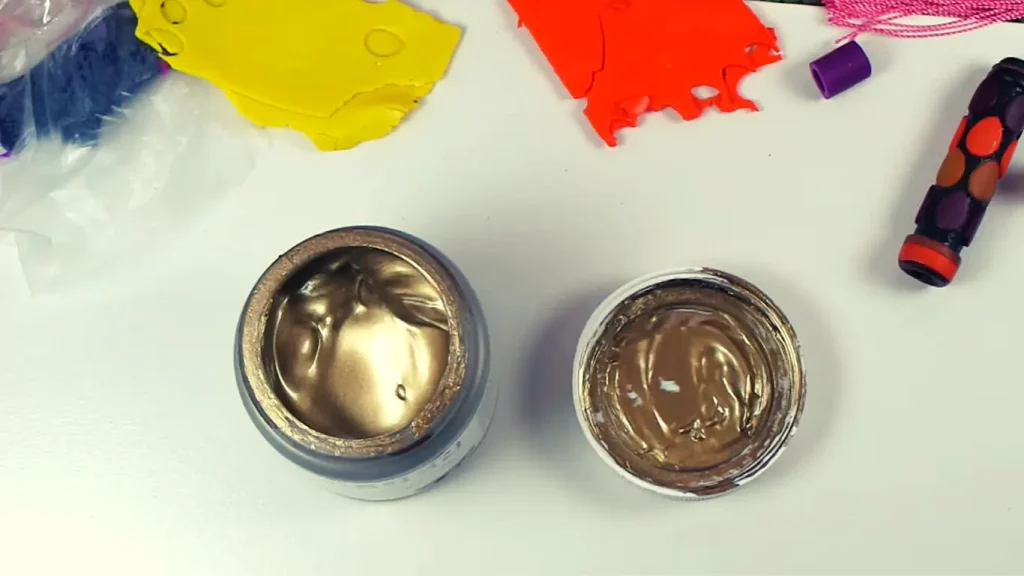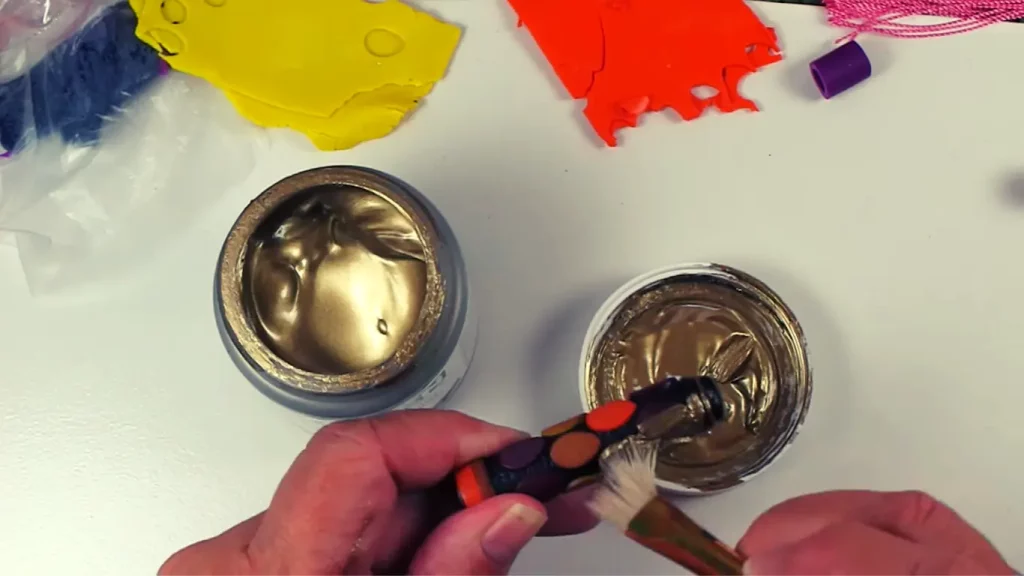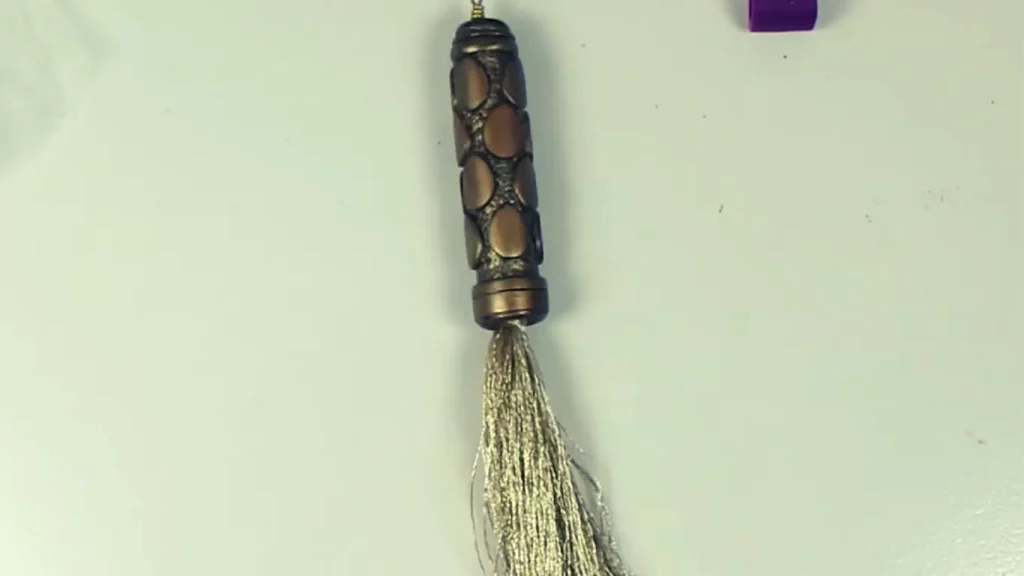Polymer clay is a type of modeling clay that is widely used for arts and crafts. You can make jewelry, sculptures, and other objects from polymer clay. This is a synthetic material made from polyvinyl chloride or PVC.
When you bake polymer clay, it is possible to make the clay heated and then charred or burnt. You may wonder if you can paint burnt polymer clay.
The answer is yes. You can paint burnt polymer clay. But you need to choose the right paint and sand the surface, so the paint adheres better to the burnt surface. Acrylic paint is the best option for painting burnt polymer clay.
In this article, we will discuss if you can paint burnt polymer clay and its process.

Burnt Polymer Clay: Can You Paint it?
Yes, it is possible to paint burnt polymer clay. Once you burn the polymer clay, it will be very difficult to paint them as the clay has already been heated and hardened. You must choose the right paint and prepare the surface well before painting burnt polymer clay. Choosing the right type of paint is very important, as it needs to be compatible with the heat and chemical makeup of the polymer clay.
How To Paint Burnt Polymer Clay
Here is a step-by-step guide to help you figure out which type of paint is best to use when painting burnt polymer clay.
Step 1: Choose the right paint: Acrylic paint is the best choice for polymer clay, even if you don’t burn it. You can use acrylic paint on different surfaces as the paint adheres better to a variety of surfaces. As the paint has flexibility, you can use it on polymer clay. Water-based paints are also an option, though they may not adhere as securely. You can also use poster paint on polymer clay.
Step 2: Prepare the surface: If you burnt the polymer clay and darkened the color, sand the surface before start painting. Make sure the surface is clean and free of dust and dirt. You can also use a damp cloth to wipe down the surface and remove any debris. Once you clean the surface, the paint will adhere better to the surface of your polymer clay.
Step 3: Apply the paint: Once the surface is clean and dry, you can start painting. Using a brush or sponge, apply a thin, even layer of acrylic paint to the polymer clay. Allow the paint to dry before adding a second or third coat.
Step 4: Seal the paint: To protect the paint and ensure it adheres securely to the polymer clay, you should seal it. You can use a clear acrylic sealer to do this. Apply a thin, even layer of the sealer and allow it to dry completely before you handle the clay.
By following these steps, you can ensure that your polymer clay figures will look great and last for years to come. With the right paint and proper preparation, you can create beautiful works of art with burnt polymer clay.

How Many Coats Of Paint Should Be Applied To Burnt Polymer Clay?
Once the polymer clay is burnt, it can be a tricky task to paint the burnt clay, as you need to properly seal and protect the paint from further damage. If you apply too few coats of paint, the result will be a poor finish. On the other hand, if you apply too many coats, you will end up giving the surface an uneven appearance. So, how many coats of paint should you apply to the burnt polymer clay?
The answer depends on the type of paint and clay you choose and also on the finish you desire to achieve. Generally, you will need two to three coats of paint on the burnt polymer clay. You should apply the first coat thinly and evenly, allowing the paint to penetrate the clay. When the paint penetrates to clay, it will ensure that it will adhere properly to the clay and prevent any unevenness on the clay surface.
After the first coat dries, you should apply the second coat. But this coat should be slightly thicker. When applying the second coat on the surface, you will need a small brush or foam brush. A small brush or foam brush will help to create a more even finish and will help to protect the burnt clay from further damage.
If you think you are yet to get the desired finish, allow the paint to dry properly before adding the third coat to the polymer clay surface. Make sure that you allow the paint to dry before painting the next coat on the surface of the polymer clay.
To sum up, you will apply a thin first coat. Allowing the paint to dry, you will use a second coat on the surface. This second coat should be slightly thicker than the first one. After the second coat, if needed, apply a slightly thicker third coat. This will ensure that the paint adheres better to the polymer clay and provides a glossy, even finish. It is important to use thin, even coats and to allow each one to dry completely before adding the next coat.
Can You Paint Polymer Clay After It’s Baked?
Yes, you can paint polymer clay after it’s baked. First, allow the clay to cool down if you don’t want to burn your finger. After the clay cools down, you can paint the baked polymer clay as usual. It usually takes one hour for the polymer clay to cool down after you take it out of the oven.
Unless you use acrylic paint, you should avoid painting the polymer clay before baking because some paints change their color when heated and can be set on the oven surface. However, Acrylic paint can resist the temperature to a certain level. So, you can use acrylic paint on the polymer clay before setting it inside the oven for baking.

Is Polymer Clay Fume Toxic?
Though polymer clay fume is not severely toxic, it can cause eye and nose irritation if the clay creates too many fumes inside the oven. But it can be harmful to you if you inhale the fume. You must set the oven to a recommended temperature before putting the polymer clay into the oven.
So, what’s the ideal temperature for baking polymer clay? Normally, 350° Fahrenheit is the ideal temperature for baking polymer clay. But, to be on the safe side, you can set the temperature at 265° Fahrenheit because too much heat for too long can burn the polymer clay.
Is Burnt Polymer Clay Toxic?
Yes, burnt polymer clay is toxic to humans. When you overheat polymer clay, it releases toxic fumes, which can be harmful if inhaled. Therefore, you must be aware of the possible risks and take precautions while baking the clay.
So, what safety measures can you take when baking polymer clay?
First, you need to bake the polymer clay in a well-ventilated room so that the fume doesn’t clog into the room. Additionally, you can wear a respirator that protects against inhaling the toxic fumes released when the clay gets heated.
You should choose a designated tray or plate for baking polymer clay. Otherwise, the plate or tray materials can also release toxic fumes when heated.
Conclusion
Though painting burnt polymer clay can be difficult and complex. However, it’s not an impossible thing to do. You can use acrylic paint on the burnt polymer clay. But remember that sanding the surface is essential. With some patience and hard work, you can save your burnt clay from throwing them away.

S. Pushon is a paint expert, self-taught artist, and currently working as an adviser in the paint industry as a Quality Improvement and Development Assistant.
An artist by heart, he draws remarkable art pieces and as a professional paint industry individual, he seeks the insight and shares with enthusiasts. Read more…

